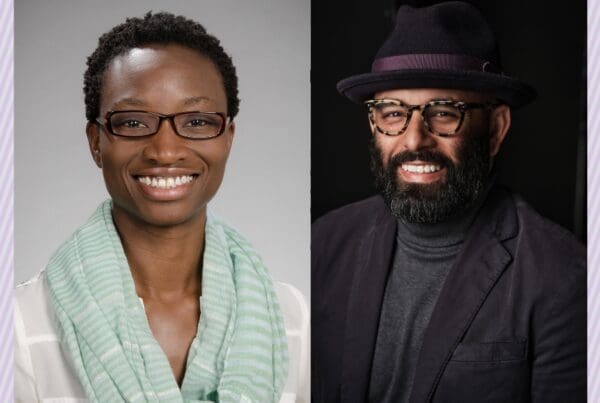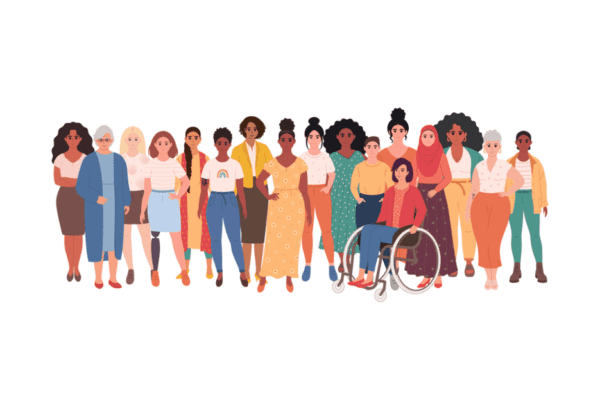Highlights | Focusing on equity
- UW Medicine Graduate Medical Education (GME) has formed a new subcommittee.
- The subcommittee is focused on equity, diversity and inclusion (EDI).
- It is led by Daniel Cabrera, MD, MPH, and includes residents and fellows as members.
- Recruiting and retaining diverse trainees is one of the main goals.
- Other goals include building an inclusive, collaborative work environment.
Building an equitable, diverse and inclusive community has been central to Graduate Medical Education (GME) in the UW School of Medicine for years. And now, the team at GME has taken another important step by forming an Equity, Diversity and Inclusion Subcommittee of the Graduate Medical Education Committee — the body that oversees our GME community.
The subcommittee is led by Daniel Cabrera, MD, MPH, and although he’s its inaugural chair, he’s no stranger to equity, diversity and inclusion (EDI) work. He has been involved in many EDI initiatives since joining UW Medicine more than nine years ago. Cabrera was also involved in diversity efforts as a medical student, resident and faculty member at the other UW (the University of Wisconsin).
“Our committee is dedicated to leading initiatives that recruit and retain a diverse housestaff, promote a culture of equity using fundamentals of anti-oppression, and ultimately creating an inclusive work and educational environment. We want to provide GME programs across UW Medicine with the tools needed to meet these goals while at the same time examining the ways that our current GME structure limits our ability to be successful,” Cabrera says.
“I value Dan and his work. It is a vital part of our GME community,” says Byron Joyner, MD, MPA, vice dean for Graduate Medical Education
For Cabrera, EDI work isn’t just about building a better workplace — it’s also personal.
“I identify as a Latino man and I didn’t see a lot of people like me in the spaces I was training or working in. Simply put, medicine benefits from having more diversity,” he says.
Recruiting and building community
UW GME is the sixth largest training program of its kind in the country. It serves more than 1,500 fellows, residents and other trainees via 121 accredited programs and more than 80 fellowship and specialty programs, at over 300 training sites.
Despite its size and reach, UW GME, like many other graduate medical education programs, wasn’t always diverse — but that’s changing.
“What we’re trying to accomplish is to bring diverse individuals to all our GME programs and make it so when they’re here they feel included, and ultimately give programs resources and structure around how they can include more EDI in their work,” Cabrera says.
Cabrera and the rest of the EDI subcommittee members — which includes residents and fellows — are helping UW GME achieve these goals in many ways. They are working to revamp the EDI curriculum. They also help hold town halls, provide trainings on topics like bystander and ally intervention, host conferences and give educational talks about EDI topics.
A major focus is recruitment — and retention, which is just as, if not more, important. UW GME is changing how it approaches recruitment and how it looks at candidates’ resumes, backgrounds and journeys.
The Accreditation Council for Graduate Medical Education (ACGME) has EDI requirements its programs must meet and recognizes that certain groups, such as Black and Native American trainees, have traditionally been underrepresented in all GME programs. While UW Medicine’s goals are to recruit more individuals who fall within these marginalized groups, sometimes diversity looks a little different, too: for example, women are overrepresented and men are underrepresented in obstetrics and gynecology, while the opposite is true in neurosurgery, orthopedic surgery and urology, Joyner explains.
“Multicultural and multiracial teams take better care of our population, and populations of color do better when they are taken care of by physicians of color,” Joyner says.
Partnering for equity
The recruitment process looks a little different for each department and division with the UW School of Medicine. Because of this, the subcommittee partners with each to help them meet their specific needs.
“One of the first things I discuss with programs interested in diversifying themselves is, if they truly value diversity, they need to define it for themselves and make the hard choice to change the way they’ve selected people in the past,” Cabrera explains.
Other partnerships are critical for the subcommittee’s work, such as their partnership with the Network of Underrepresented Residents and Fellows (NURF) and the UW Medicine Office of Healthcare Equity (OHCE).
“There is a wealth of knowledge and expertise, and we’re bringing it all together and figuring out a best practice for everyone,” Cabrera says.
Partnership also means working with new trainees and students who bring fresh ideas for change with them, Cabrera adds.
Currently, the subcommittee is focused on working with NURF and the Office of Healthcare Equity to develop a best practices toolkit for EDI work that program directors and administrators can access and use to train the next generation of physicians.
“EDI is the work of everyone collectively. There is a lot of work to be done, no shortage in the future. I really hope everyone who is part of this institution finds some way to engage in this, really for the betterment of everyone,” Cabrera says.


